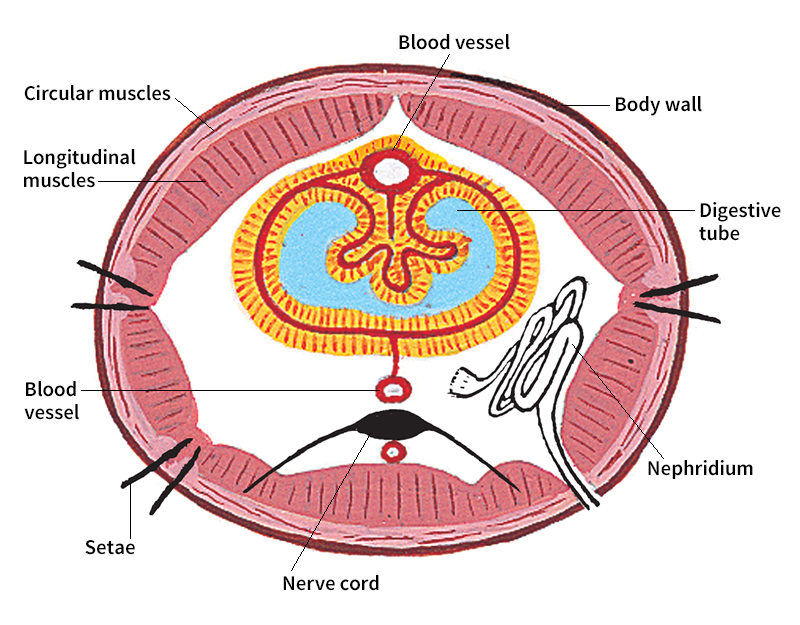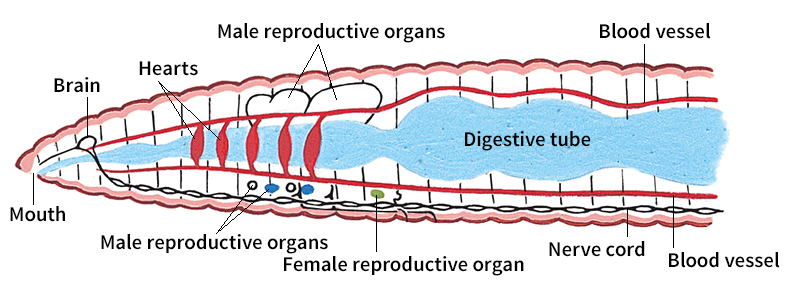Earthworm, also called night crawler, is a name used for many kinds of common worms found in moist, warm soil throughout the world. The earthworm is a well-known fishing bait, so it is sometimes called a fishworm or angleworm.
Earthworms contribute to the growth of plants. The worms help break down decaying matter in the soil. The soil is loosened and mixed as the earthworm burrows through the ground. Worms are also important food for birds and other animals.
Earthworms range in size from only 1/25 inch (1 millimeter) long to up to 11 feet (3 meters) long. They have a smooth body that is made up of rings called annuli. The reddish-brown body of the earthworm is built like two tubes, one inside the other. The inner one is the digestive tube and the outer one is the body wall. Earthworms do not have eyes or ears, but they have a mouth and are sensitive to heat, light, and touch.

An earthworm crawls by lengthening its front part and pushing through the soil, then pulling the hind part forward. The animal’s body wall has two kinds of muscles that it uses to crawl. Circular muscles surround the worm’s body and can make the body shrink or spread out. Longitudinal muscles run the length of the body and can shorten or lengthen the worm. Numerous pairs of setae (bristles) along its underside prevent the worm from slipping.

The earthworm has no lungs or gills. It breathes through its thin skin, which is in contact with the air between the particles of soil. If the weather becomes too dry and warm, a worm will die. Earthworms feed on dead plant material that is found in the soil. This is why some people say an earthworm eats its way through the soil.

An earthworm has both male and female reproductive organs, but each worm must mate with another worm to form eggs. After mating, eggs are laid in a cufflike structure that surrounds the body of the earthworm. The clitellum, a few large annuli of the body, produces this cuff for the eggs. As the earthworm moves, the cuff slides along the body and over the head. It closes completely around the eggs to make a sacklike cocoon. After several weeks in the cocoon, the young earthworms hatch.
See also Animal (Regeneration); Gippsland giant earthworm.
